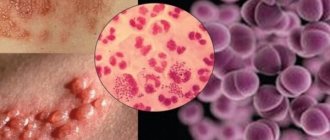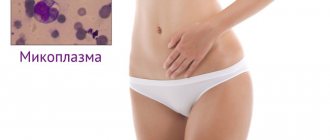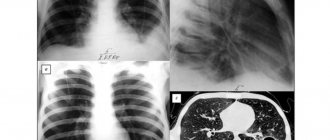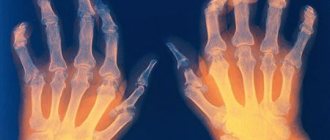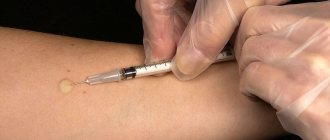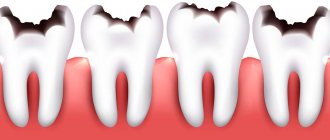Causes of periodontitis
Hundreds of thousands of bacteria live and die in every person’s mouth around the clock. Their waste products accumulate on the teeth in the form of plaque. When brushing your teeth, this plaque is removed, but it forms again after a few hours. Within 2-3 days it hardens and transforms into tartar. You can only get rid of it with the help of professional cleaning at a dental clinic, since both a brush and dental floss will be powerless in this case. In most cases, it is in the absence of basic oral hygiene that a person begins to develop periodontitis, the symptoms of which make themselves felt at almost any age.
At first, plaque on the teeth causes slight irritation of the gums and gingivitis, but then continued inflammation leads to the formation of “pockets” - empty space between the teeth and gums that fills with bacteria and food debris. As a result, neglected, chronic periodontal disease leads to bone destruction and tooth loss.
In addition to tartar, periodontitis is caused by some other reasons:
- smoking, chewing tobacco - nicotine lowers immunity, creates a favorable environment for the proliferation of bacteria, and impairs the healing process of destroyed periodontal tissues;
- poor heredity – when periodontitis is associated with a person’s hereditary predisposition to this disease – brushing teeth and maintaining oral hygiene will be practically ineffective;
- medications - antidepressants, cold medications and some other groups of medications are known to contain substances that reduce saliva production. However, it performs an important disinfecting function, and, accordingly, when the amount of secretion decreases, the intensity of plaque formation increases;
- poor nutrition - if a person’s standard diet does not include foods rich in calcium, as well as vitamins B and C, then the risk of developing periodontitis increases several times.
Forms and symptoms of periodontitis
There are three types of periodontitis: localized, generalized and aggressive.
Localized periodontitis occurs in a limited area, locally. Only one tooth or several adjacent teeth are affected. In most cases, localized periodontitis occurs due to malocclusion, trauma to the tooth and gums, poorly installed fillings, or when dental filling material or arsenic gets on the gums. If periodontitis affects only the socket of one tooth, then most likely the culprit is cervical (proximal) caries. In some cases, localized periodontitis can occur as a result of microtrauma of the gums - injury from spicy food, dental floss, a broken filling, a hard toothbrush, etc. Symptoms of localized periodontitis include the following:
- pain in the tooth area when food gets between the teeth;
- discomfort when chewing food;
- pain when pressing on the tooth from the gum side;
- feeling of tooth looseness; thinning gums;
- swelling, redness of the gums;
- the formation of a specific gap - a periodontal pocket, into which food and water enter.
In the acute form of the disease, the tooth socket is destroyed and abscesses form.
The decay of tissues adjacent to the tooth threatens its immediate removal. Generalized periodontitis most often occurs chronically and covers a larger area than localized one. In most cases, generalized periodontitis spreads to the gums of both jaws, which seems to be a more serious pathology than inflammation of the gums of one or two teeth. Symptoms of such periodontitis include:
- superficial gingivitis, which progresses to the destruction of periodontal tissues;
- destruction of dental ligaments and gum-tooth connections; sluggish osteomyelitis of bone tissue;
- loosening of teeth;
- bleeding gums, pain when pressing, brushing teeth;
- the presence of tartar and plaque; pocket formation.
Aggressive periodontitis is a disease in which the patient externally produces little plaque, but the inflammatory process in the tissues proceeds much faster than in other forms of the disease. This disease develops very quickly and can reach its peak within five years, while other forms make themselves felt after ten or more years. The depth of periodontal pockets in aggressive forms of periodontitis reaches eight or more millimeters. The culprit is a certain type of microorganism.
Most often, this form leads to early tooth loss by the patient. Most often, aggressive periodontitis develops in children, adolescents and young adults. Aggressive periodontitis can be cured at an early stage of the disease, when changes in the periodontium have not reached critical levels.
Types of disease
The disease can be acute or chronic. Acute periodontitis occurs suddenly and has all the pronounced signs of inflammation. The patient is accompanied by severe pain, elevated body temperature, bleeding gums, and deterioration in general condition.
If the acute stage of the disease begins to be treated at the initial stage of its development, then the disease ends favorably, without complications. If treatment is not started on time and the acute stage begins, it becomes chronic.
Chronic periodontitis is not completely curable. At certain periods of time, a person may not be bothered by anything.
But, under the influence of provoking factors, the disease worsens and manifests itself in the form of mild symptoms:
- aching pain,
- bleeding gums,
- strong deposits on the enamel.
Chronic generalized periodontitis is not completely curable, but it can be transferred to a latent state. To do this, you need to shorten the period of exacerbation of the disease and increase the period of remission (when there are no manifestations of the disease).
What is the difference between periodontitis and periodontal disease?
| Symptoms | Periodontal disease | Periodontitis |
| Character of the current | Slow onset disease | Compared to periodontal disease, the disease develops faster and more intensely |
| Causes | Diabetes mellitus, heredity | Poor oral hygiene |
| Location of the lesion | The process always covers all teeth | The process can be either localized or widespread |
| Swelling of the gums | Not visible | Present |
| Bleeding gums | Very rarely | Often |
| Tooth mobility | Shows up very late | May appear in the early stages |
| Occurrence frequency | Rarely no more than 3% among adults | Very often more than 90% |
To summarize, we can say that periodontal disease is a disease in which bone tissue is destroyed, but it occurs without inflammation. Periodontitis, on the contrary, occurs with severe inflammation.
Differences in the course of the disease in adults and children
Periodontitis is a rare disease for children, occurring in 2-3% of the child population. Its course is almost no different from a similar disease in adults. The only thing is that in childhood the course of the disease is more sluggish than in older people.
Classification of childhood periodontitis includes:
- Prepubertal. The period is associated with the physiological loss of baby teeth. During this process, a secondary infection occurs, which involves permanent teeth in the inflammatory process. Because of this, existing molars may be damaged.
- Puberty. The species is associated with hormonal changes in adolescents, which result in total damage to the jaw. This pathology is treated jointly by a dentist and an endocrinologist.
Important! Periodontitis in children occurs for various reasons, but the most important is poor oral hygiene.
Treatment of periodontitis
Treatment of periodontitis is aimed at ensuring that the gum tissue tightly wraps around the neck of the tooth. But very often, treatment of periodontitis begins at the stage when the destruction of the supporting bone tissue and gums has already occurred, as a result of which the treatment of periodontitis is delayed due to the accumulation of pathogenic microorganisms in the gum pockets. In such cases, periodontitis treatment is aimed at preventing the gum pockets from deepening and preventing further destruction of the gum and bone tissue. To do this, thorough professional oral hygiene is carried out by cleaning the gum pockets from bacteria, which prevents further destruction and progression of periodontitis.
If diagnosed in a timely manner, periodontitis responds well to treatment using non-invasive methods. If the depth of the gum pockets is no more than 5 mm, then a procedure to cleanse the tooth root from the inflamed pulp using antibiotics is sufficient. In the future, you need to maintain oral hygiene and periodically visit the dentist to remove tartar.
Curettage or ultrasonic cleaning of teeth using instruments removes supra- and subgingival tartar. Removing tartar using ultrasound, among other things, polishes the surface of the teeth, preventing the appearance of tartar, and oxygen disinfects gum pockets and promotes accelerated healing. After ultrasonic cleaning, it is recommended to use topical antibiotic gels. Local antibacterial drugs can suppress the growth of bacteria in the gum pockets, which is the main point in the treatment of periodontitis. Refusal to take systemic antibiotics for the treatment of periodontitis in favor of local drugs can reduce the likelihood of side effects.
If the depth of the gum pocket due to periodontitis exceeds 5 mm, then surgical intervention is required.
To reduce the gum pocket in case of periodontitis, flap surgery is performed. A small incision is made in the gum area, which allows you to lift it and expose the root of the tooth, which needs to be cleaned of tartar. If periodontitis has already spread to the bone tissue, then before suturing the incision, the bone tissue is leveled. Flap surgery is performed under local anesthesia and lasts from 1 to 3 hours.
Transplantation of soft gum tissue is necessary when, due to atrophy of the gum pockets, the periodontium of the teeth is exposed and visually looks longer. For replacement, a piece of tissue from the palate is used. This procedure helps stop the deepening of the gum pocket and helps cover exposed tooth roots, preventing the development of hyperesthesia. For women, especially young women, soft tissue transplantation for periodontitis gives a double result - cure and relief from cosmetic defects.
The use of a bone graft for osteoplasty for periodontitis is carried out when there is significant destruction of bone tissue, when it cannot perform the functions of holding the tooth in its place. The graft can be made from either synthetic material or your own bone tissue. A bone graft for the treatment of periodontitis has an undeniable advantage: it serves as a platform for the formation of new bone tissue, which is called directed regeneration.
Directed regeneration of bone tissue in deep lesions of periodontitis restores bone tissue. To do this, the area between the tooth and bone tissue is filled with a biocompatible material, as a result of which only bone tissue grows in this area, the growth of other cells is completely suppressed. The second method of directed regeneration for the treatment of periodontitis involves the administration of a protein-containing gel, which is similar in composition to tooth enamel. As a result, the body begins to stimulate bone growth in response to false information about the formation of a new tooth.
In the prevention of periodontitis, health education of the population, training in proper brushing of teeth in childhood and nutritious nutrition are important. For timely detection of periodontitis and other diseases, it is necessary to undergo a routine dental examination at least once every six months and procedures to remove tartar, which provokes the development of periodontitis.
If gingivitis is present, it must be treated, since gingivitis is the first manifestation of periodontitis. At this stage, periodontitis can be prevented by using antibacterial toothpastes and anti-inflammatory mouth rinses.
Dentition defects must be treated in a timely manner, as this forms the correct load on the teeth and helps prevent periodontitis.
Other medical procedures
Further treatment of periodontitis depends on the clinical picture in each specific case. The dentist may prescribe splinting, installation of dentures, or surgery.
Splinting
A procedure aimed at strengthening teeth is used in cases of second or third degree mobility.
A procedure aimed at strengthening teeth is used in cases of second or third degree mobility. Positive side effects are a decrease in the inflammatory process, a decrease in the rate of bone tissue atrophy, as well as their complete preservation.
Surgery
Treatment of periodontitis surgically is carried out in the absence of effects from the use of other methods. This is often the only way to eliminate periodontal pockets and keep periodontal tissue and teeth intact.
There are three options for the procedure:
- Flap surgery. The affected area of gingival tissue is cut out, after which the surface of the teeth and the contents of periodontal pockets are thoroughly cleaned.
- Curettage. It involves removing periodontal pockets and cleaning out subgingival deposits.
- Gingivectomy. The pockets are cleaned and surgically reduced, after which the edges of the affected gum are removed.
Traditional methods of treating periodontitis
Method one. Take six grams of lingonberry leaves and pour a glass of hot water, boil for twenty minutes. Cool and strain. Bring the volume to 200 ml, diluting with boiled water. We rinse the mouth with this solution every 3-4 hours.
Method two. Pour one tablespoon of tricolor violet herb into a glass of boiling water. Boil for 15 minutes, cool and strain. Bring the solution to 200 ml by adding boiled water. We rinse the mouth with this infusion twice a day.
Third way. Brew two teaspoons of calendula flowers with two glasses of boiling water and rinse the mouth with a slightly cooled infusion.
Method four. The use of mixtures of sea buckthorn and fir oil, or fir oil and fish oil, has a good effect. We take the ingredients in equal proportions. Mix, drop a few drops of the resulting mixture onto a gauze pad and massage the gums with the swab for a while. We carry out the procedure two to three times a day.
Fifth way. Brew two tablespoons of St. John's wort herb in 500 ml. water. Boil for five minutes, let cool and rinse your mouth with the infusion twice a day.
Sixth method. Take 10 g. chopped comfrey root and add a glass of water. Boil for 10 minutes and strain. We rinse the mouth with this decoction after each meal.
Method seven. Take six tablespoons of chopped agrimony and add one liter of water. Boil over low heat for 5 minutes then cover with a lid. Infuse the broth in a warm place for 4 hours and strain. We rinse the oral cavity with the decoction. Very effectively relieves pain in the gums and strengthens them.
Method eight. Rinse your mouth with well-infused kombucha for a week.
Complications of periodontitis
Inflammation developing in periodontal tissues leads to bone resorption and disruption of the intergingival junction, which can cause loosening and tooth loss. Untimely treatment of the disease leads to general intoxication of the body, which can result in:
- increased blood glucose levels;
- the development of diseases associated with intoxication processes in the body;
- the effect of intoxication on the cardiovascular system can become one of the factors provoking the development of heart attacks and strokes;
- dental disease such as pulpitis can be a consequence of the inflammatory process in the periodontium - if an infection enters the tooth canal along its small branches, the neurovascular bundle (dental pulp) may be damaged and the inflammatory process in it may develop;
- infection of bone tissue can lead to the development of ostemyelitis;
- phlegmon and abscesses are possible when the infection spreads to soft tissue.
Is it possible to cure the disease at different stages?
There are three degrees of periodontitis: mild, moderate, severe. Symptoms and treatment at each of these stages are different.
Mild damage
The mild stage begins with bleeding of the gums due to mild mechanical irritation, an unpleasant odor from the oral cavity and plaque appear.
Mild treatment is not complicated and always ends successfully. Only local therapy is included. The problem is that at this stage people do not go to the dentist, since they do not have any serious discomfort.
Average degree of damage
At this stage, the clinical picture of the disease does not change. But, to the previous signs are added:
- increase in size between periodontal canals,
- there is a tendency to loosen.
It is important at the middle stage to start treatment and not to cause pathology, as there is a risk of being left without a beautiful smile.
If the lesion is medium, not only local, but also general therapy is used, which prevents further spread of the infection and protects the person from tooth loss.
Severe degree of damage
At this stage, not only looseness is noted, but also tooth loss. The person’s general condition worsens, weakness, loss of appetite, and apathy develop.
Treatment of the disease at this stage does not always have a favorable prognosis, since sometimes periodontitis has a progressive course that cannot be stopped with medications, like other forms.
At this stage, combination therapy is used, in the form of the use of general and local drugs, as well as physiotherapeutic procedures and surgical intervention.
Interesting! Diagnosis of the disease is not difficult; to determine the stage, just look at the condition of the oral cavity. You can even do this yourself by comparing photos of dental damage at different stages and your oral cavity.
Prevention of periodontitis
Maintaining oral hygiene. Effective prevention of periodontitis in adolescence and adulthood is oral hygiene. You should brush your teeth 2 times a day: in the morning and before bed, but preferably also after meals. In this case, it is necessary to gently massage the gums. Additionally, you can use mouthwash, dental floss, etc. It is necessary to thoroughly clean the crowns of the teeth. To destroy pathogens, it is recommended to choose pastes containing antibacterial, anti-inflammatory components, as well as pastes whose action is aimed at eliminating plaque.
Visiting the dentist . To prevent acute and chronic periodontitis, it is recommended to visit the dentist once every six months. If necessary, the doctor fills teeth, removes plaque, etc. Restoring lost teeth allows you to remove excessive load from other teeth due to its even distribution. The doctor also monitors the correct development of the jaws and teeth (bite, position, etc.) and, if necessary, prescribes appropriate therapy in a timely manner.
Proper nutrition. An important condition for preventing the disease is the nature of the food consumed. It should be optimally hard, so that during the chewing process, plaque is removed from the teeth, and the gums receive a natural massage. In addition, your diet should include fresh vegetables and fruits rich in vitamins and beneficial microelements.
Therapeutic techniques
We list the main ones: local therapy, general procedures, preliminary prosthetics, splinting, surgical intervention .
Local therapy means sanitizing the oral cavity, treating pockets in the gums with antiseptics, and applying medicinal gels. Such procedures require 10 daily sessions. Treatment of the oral cavity is carried out twice a day. In addition to such procedures, physiotherapy is prescribed as an auxiliary technique.
General therapy involves the use of antibiotics. Medicines are taken orally or as injections.
Preparatory procedures involve the treatment of carious processes and the elimination of non-viable teeth. Then splinting, prosthetics, and surgical procedures are performed.
Splints are applied when teeth become loose. This eliminates inflammation of the gums. Surgical procedures are used to cleanse the gums of inflamed tissue and build up lost bone mass.
Prosthetics are performed if there are no teeth and chewing function needs to be restored. Tooth displacement is prevented and the possibility of loss of healthy tissue is eliminated. A normal smile is restored, communicating with people is not so embarrassing.
Often, dentists install plastic dentures for several months, then replace them with permanent metal ones . Temporary dentures are needed to provide relief from normal teeth during the chewing process. If you do not install an orthopedic device for a while, you can expect bad consequences. Teeth will become loose and jaw bones will be destroyed.


